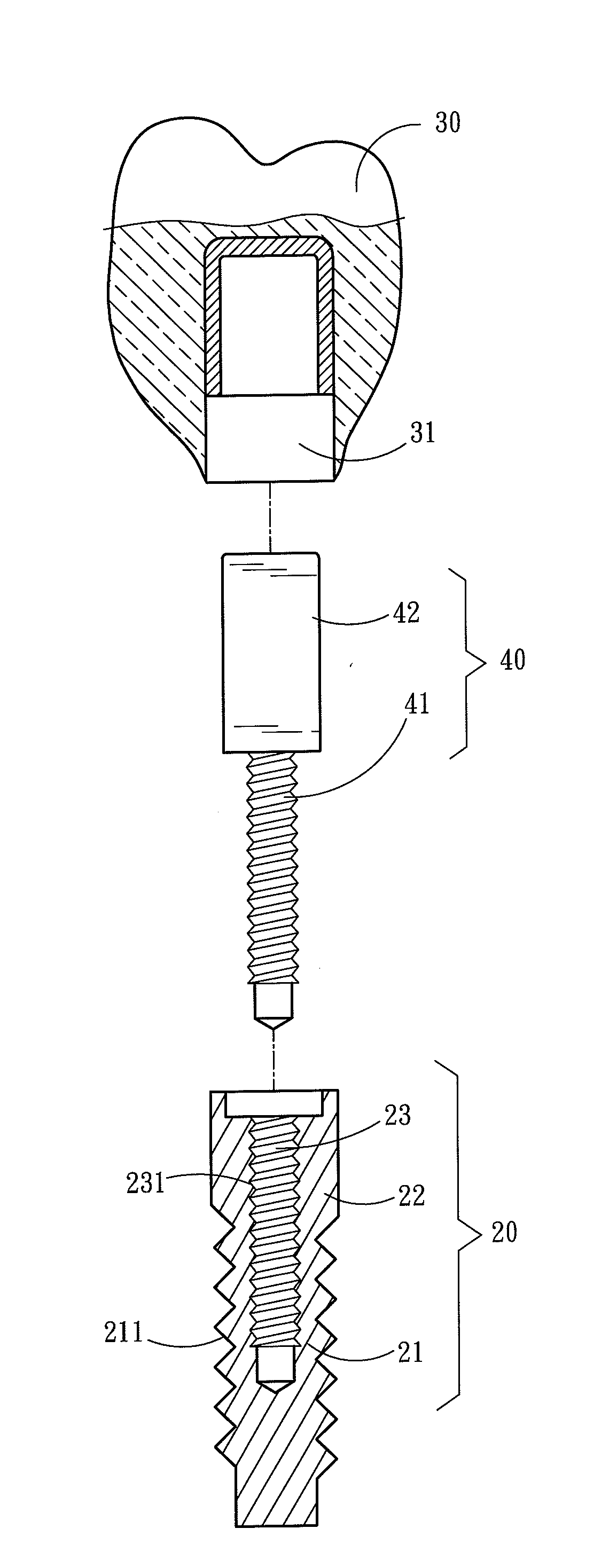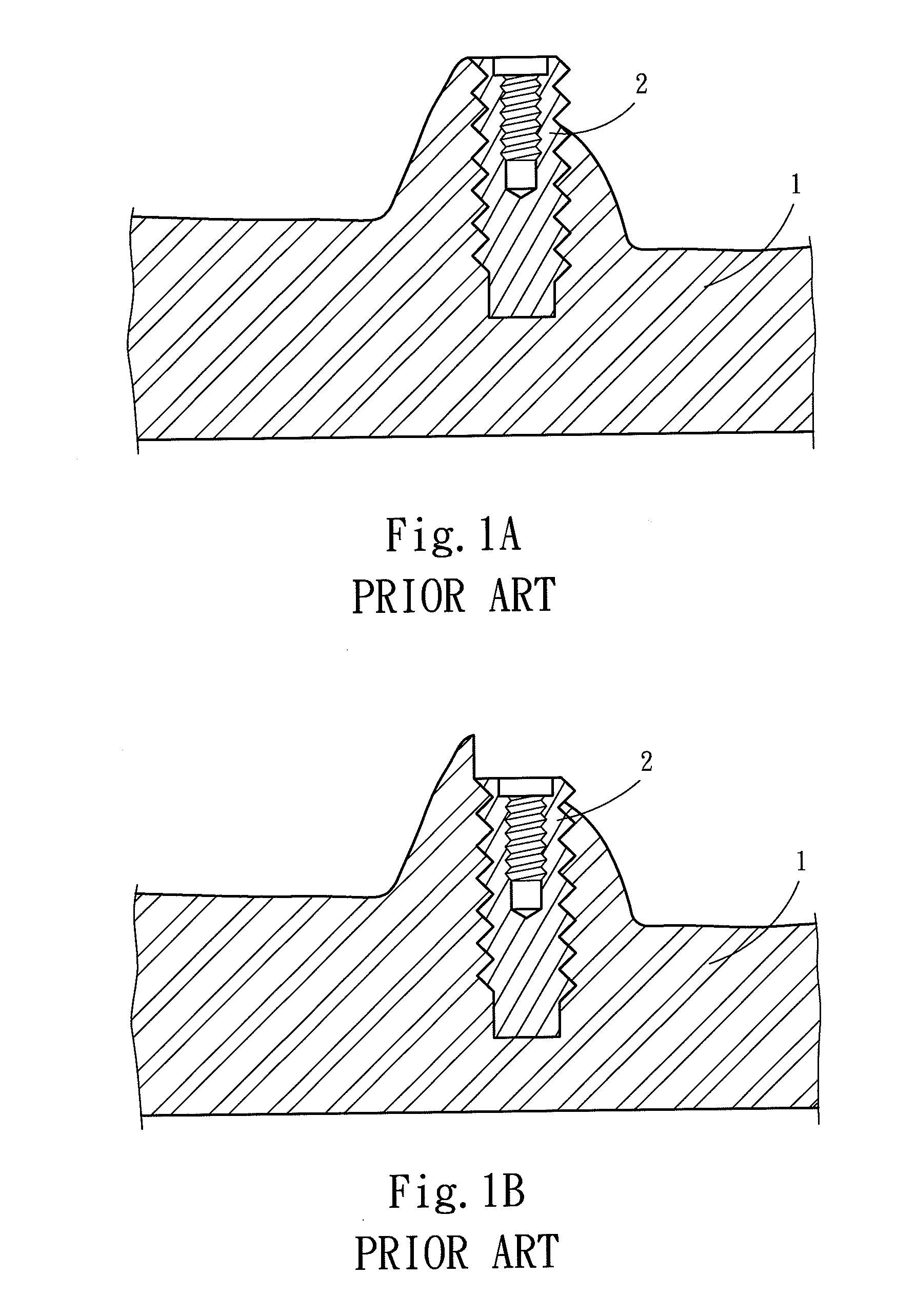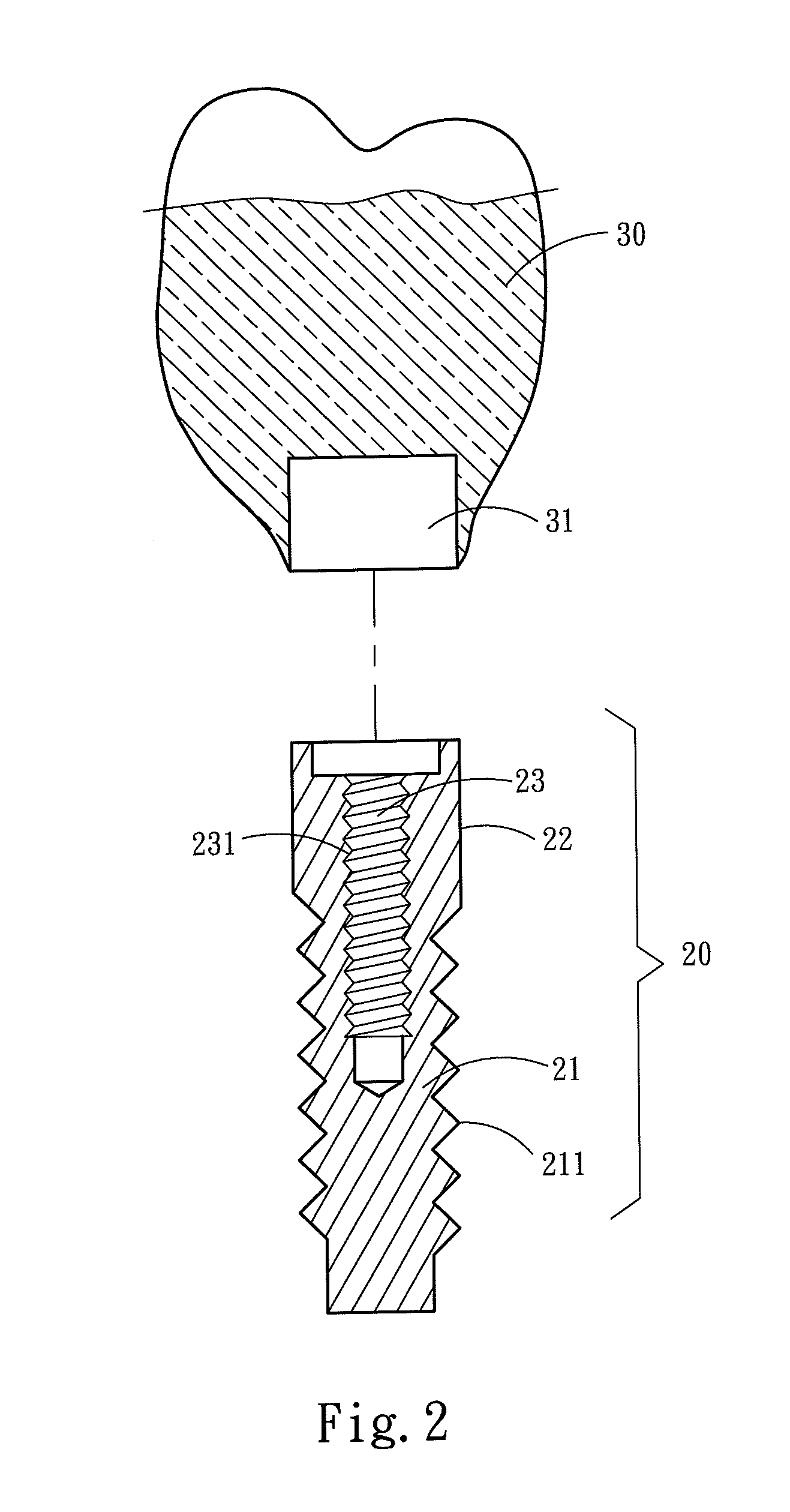Universal dental implant structure
a dental implant and universal technology, applied in dental implants, dental surgery, medical science, etc., can solve the problems of occlusion interference easily, implantation failure, strength deficiency of bone integration, etc., to avoid grinding adjustment, prevent inadequate bone integration strength, and avoid grinding adjustment.
- Summary
- Abstract
- Description
- Claims
- Application Information
AI Technical Summary
Benefits of technology
Problems solved by technology
Method used
Image
Examples
Embodiment Construction
[0029]Please refer to FIGS. 2 and 4A, the present invention aims to provide a universal dental implant structure implanted in a patient's gum 10. The gum 10 has a cancellous bone 11, a cortical bone 12 located on the surface of the cancellous bone 11 and a soft tissue 13 located at one side of the cortical bone 12 remote from the cancellous bone 11. The universal dental implant structure includes an implant member 20 and a tooth cap 30. The implant member 20 has an implant portion 21, an extended holding portion 22 connecting to the implant portion 21 and a coupling cavity 23 located on one side of the extended holding portion 22 remote from the implant portion 21. The coupling cavity 23 is extended from the extended holding portion 22 towards the implant portion 21 and has an internal thread section 231 on an inner surface thereof. The tooth cap 30 has a coupling portion 31 to encase and fasten to the extended holding portion 22.
[0030]In the event that the dental implant is done on...
PUM
 Login to View More
Login to View More Abstract
Description
Claims
Application Information
 Login to View More
Login to View More - R&D
- Intellectual Property
- Life Sciences
- Materials
- Tech Scout
- Unparalleled Data Quality
- Higher Quality Content
- 60% Fewer Hallucinations
Browse by: Latest US Patents, China's latest patents, Technical Efficacy Thesaurus, Application Domain, Technology Topic, Popular Technical Reports.
© 2025 PatSnap. All rights reserved.Legal|Privacy policy|Modern Slavery Act Transparency Statement|Sitemap|About US| Contact US: help@patsnap.com



